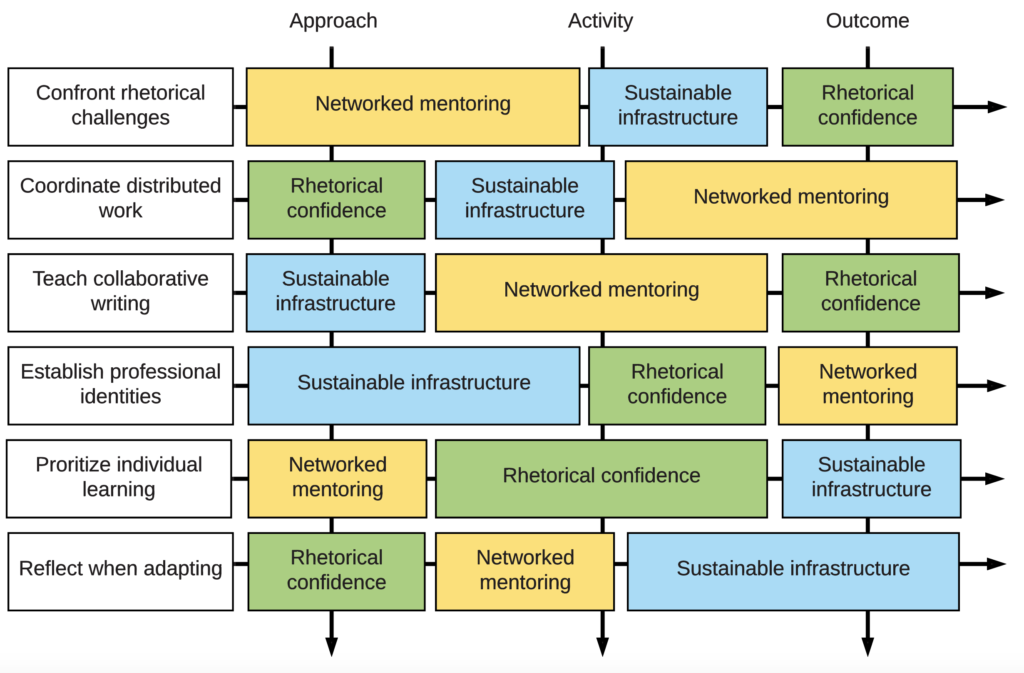Download a printable version of this one-pager.
The Crow team is building digital tools to aid the study and teaching of writing. Because we serve diverse constituencies, we are building an interdisciplinary, inter-institutional community of researchers, developers, and teachers who actively contribute to our project. We call our approach to collaboration constructive distributed work, recognizing both the potential and shortcomings of building academic research teams that perform the unique coordination required to build effective digital tools.
This approach to leadership, team-building, and professional development requires three dimensional thinking that integrates core principles derived from scholarship with orientations to work and best practices. We describe orientations to work by thinking of them as approaches that inform our choices, activities we carry out in daily work, and outcomes that benefit both individual researchers and our team as a whole. This three dimensional approach helps us to make decisions about where to focus our effort and attention to best sustain our team and the digital tools we are building.
- Developing rhetorical confidence. Team members cultivate the ability to argue for the value of their work. Collaboration often involves resolving differences, but also requires the confidence to question assumptions and share ideas. (Flower, 2008).
- Using a networked model of mentoring. While we retain a hierarchical leadership structure, we recognize mentoring exists as networks of people, support, and influence (Montgomery, 2017). All team members should see themselves as both mentor and mentee.
- Sustained attention to infrastructure. Cushman & Green (2010) demonstrate how attention to infrastructure, that is, tools and methods for communication and documentation, supports a traditional sense of sustainability. Foregrounding infrastructural thinking also embeds reflection about project impacts in team activities, for both the team itself and associated stakeholders.
Integrating these principles, the Crow team has derived six best practices that help us balance the long-term health of our project and the professional and personal growth of the people who enable its success:
- Confront the rhetorical challenges inherent in distributed work.
- Coordinate, consolidate, and archive distributed work with a team communication platform.
- Teach collaborative writing strategies that value coordination and require conversation.
- Help team members establish cohesive professional identities as they shift between roles and tasks.
- Prioritize individual learning even when new skills and competencies don’t directly benefit the team.
- Reflect carefully when adapting writing practices from software development.

Over five years, the Crow team has built a set of tools that improves the sustainability of digital research projects and the working conditions of the people who create them. We invite other research teams to visit our website, explore these tools, adapt them for their own purposes, and share feedback about their effectiveness. We hope to facilitate a conversation about distributed work which will continue to generate best practices evaluated and improved by data-driven research.